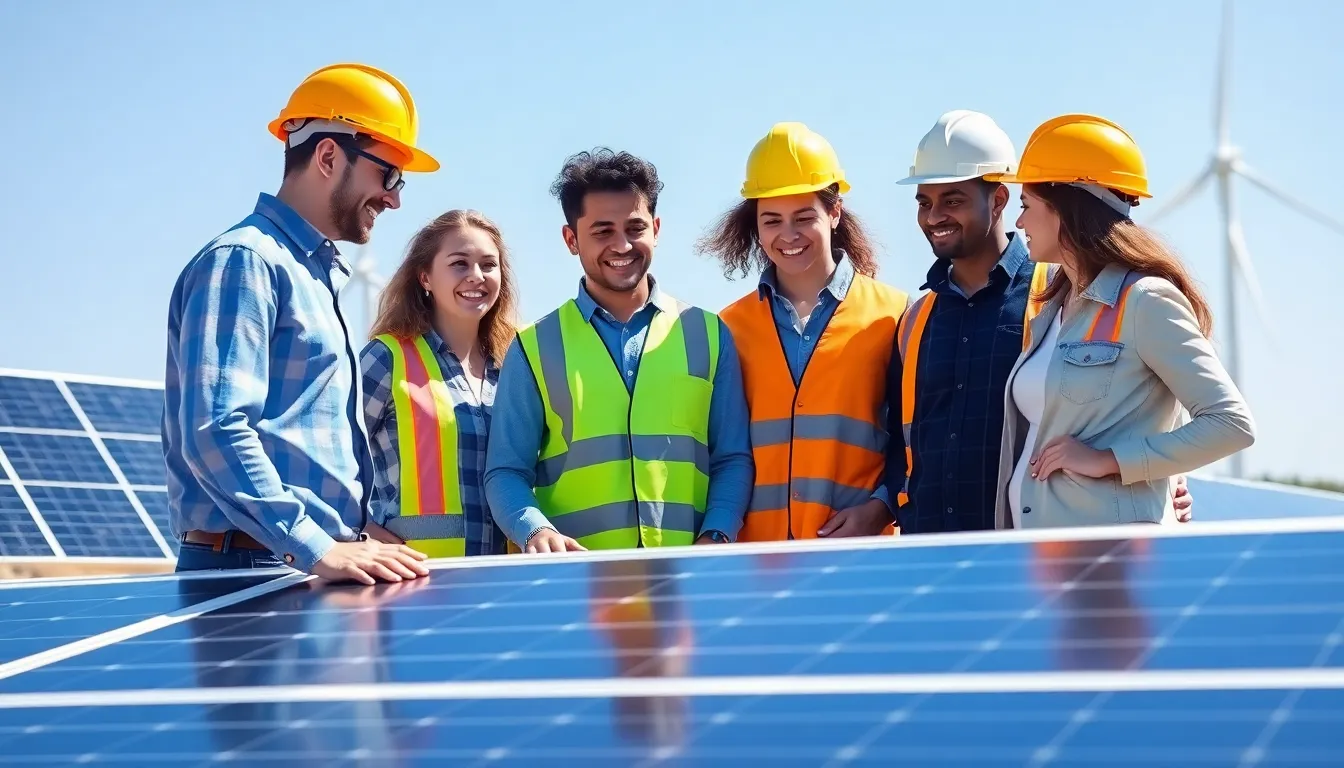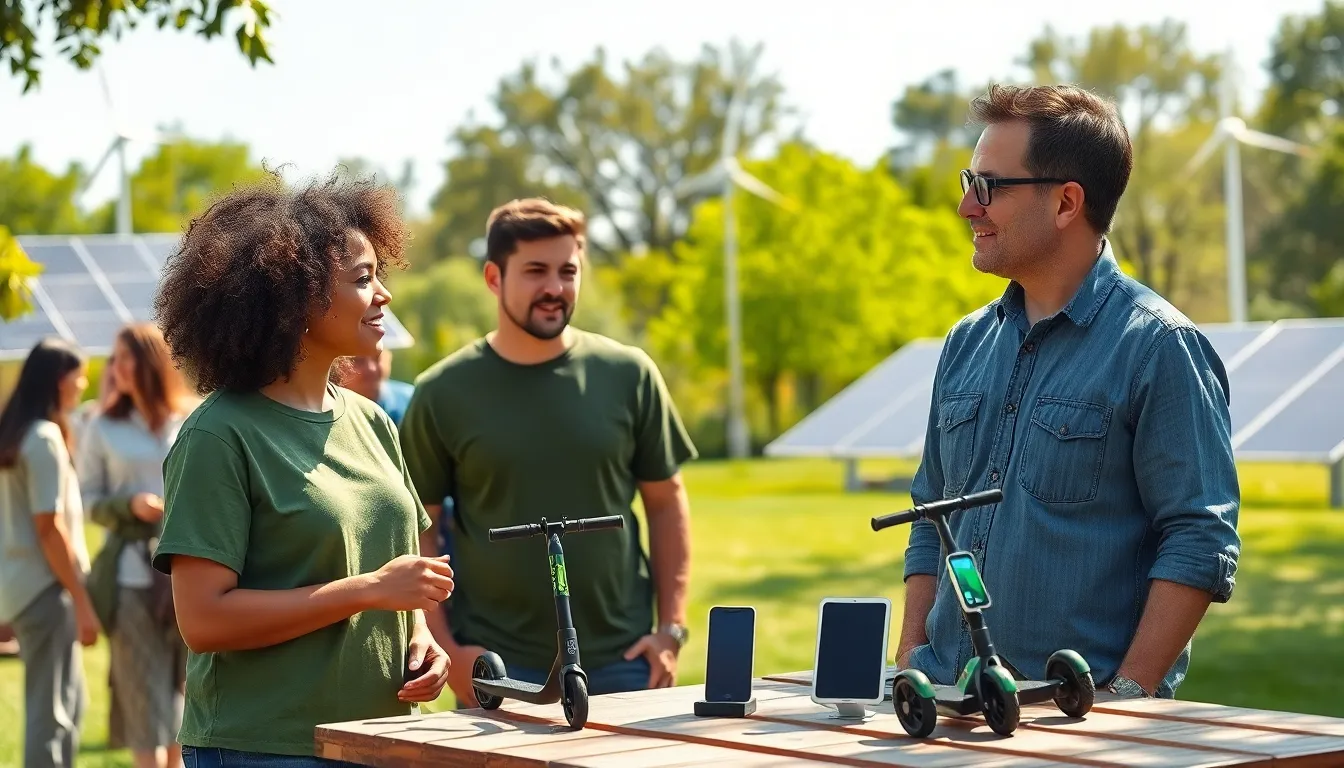In a world where climate change is the hot topic (and not just because of global warming), the green economy is making waves. Tech innovations are stepping up to the plate, swinging for the fences to save our planet while keeping our lives convenient and, dare we say, fun. From smart energy solutions to eco-friendly gadgets, technology is transforming how we think about sustainability.
Table of Contents
ToggleOverview of Tech for Green Economy
Technological advancements shape the green economy by enhancing efficiency and reducing environmental impact. Renewable energy sources, such as solar and wind power, enable the generation of clean electricity. Technologies like smart grids facilitate energy distribution, optimizing usage and minimizing waste.
Electric vehicles demonstrate an effective way to reduce greenhouse gas emissions while offering a sustainable transportation option. Charging stations for these vehicles increasingly appear in urban areas, making electric driving more accessible. Sustainable agriculture employs precision farming methods through IoT sensors and drones, improving crop yields while conserving resources.
Smart home technologies contribute significantly to energy conservation. Devices like smart thermostats and LED lighting systems help individuals and businesses track energy consumption in real time. Each device encourages reduced energy usage and ultimately lowers costs.
Recycling technologies enhance waste management processes, promoting circular economy practices. For instance, automated sorting systems utilize AI to improve waste separation and recovery rates. Sustainable construction integrates advanced materials and techniques that minimize resource consumption and reduce landfill waste.
Innovation in water conservation also plays a crucial role in the green economy. Water-saving devices, such as low-flow faucets and smart irrigation systems, optimize usage, reducing waste and ensuring sustainable access to clean water.
Emerging tech like carbon capture and storage presents new strategies to mitigate emissions from industrial processes. These technologies capture CO2 and prevent its release into the atmosphere, supporting climate goals.
Investments in these technologies drive economic growth while addressing climate change. The proactive use of tech not only fosters environmental sustainability but also creates opportunities for job creation and economic resilience.
Key Technologies Driving the Green Economy

Technological advancements significantly shape the green economy, contributing to environmental sustainability and resource efficiency.
Renewable Energy Innovations
Solar panels increasingly dominate the renewable energy landscape, harnessing sunlight to produce electricity. Wind turbines also play an essential role, converting wind energy into power for homes and businesses. Innovations in energy storage, such as advanced battery systems, facilitate the integration of these renewable sources into the grid, ensuring a continuous power supply. Hydropower remains a reliable method, utilizing flowing water to generate energy. Geothermal energy harnesses heat from beneath the Earth’s surface, providing a stable and sustainable energy source. Together, these innovations drive the transition towards clean energy generation.
Sustainable Transportation Solutions
Electric vehicles (EVs) significantly reduce greenhouse gas emissions by replacing traditional combustion engines with electric motors. Charging infrastructure expands rapidly, making EVs more accessible and convenient. Public transportation systems also adopt greener technologies, including electric buses and hybrid vehicles, to decrease urban pollution levels. Bicycles and e-bikes present alternatives to fossil fuel-based transportation, encouraging healthy and eco-friendly commuting. Innovations like autonomous electric vehicles promise to enhance transportation efficiency while minimizing environmental impact.
Energy Efficiency Technologies
Smart thermostats improve energy management by automating heating and cooling based on user preferences and occupancy. LED lighting consumes less energy than traditional bulbs, significantly reducing electricity use in homes and businesses. Energy-efficient appliances, such as refrigerators and washing machines, help conserve resources without sacrificing performance. Building automation systems also optimize energy consumption through real-time monitoring and control of lighting, climate, and ventilation systems. These technologies collectively enhance energy efficiency across various sectors, promoting sustainable practices and reducing overall consumption.
Impact of Tech on Environmental Sustainability
Technological advancements play a crucial role in fostering environmental sustainability. These innovations significantly reduce the carbon footprint of various sectors.
Reduction of Carbon Footprint
Renewable energy sources efficiently generate clean electricity. Solar panels and wind turbines serve as prominent examples of energy generation that minimizes greenhouse gas emissions. Electric vehicles contribute by offering sustainable transportation options. The increasing availability of charging stations supports the shift toward electric car adoption. Advanced energy storage systems enhance energy reliability and efficiency, creating a more sustainable infrastructure. Companies that invest in these technologies observe not only a reduction in operational emissions but also improved public perception.
Promoting Circular Economy Practices
Recycling technologies automate waste management processes. AI-powered sorting systems streamline recycling efforts, making it easier to reclaim valuable materials. Smart home devices, such as energy-efficient appliances, help reduce consumption and waste. These technologies encourage responsible resource use, contributing to a circular economy. Businesses adopting circular practices enjoy economic benefits by minimizing waste and reusing materials. Moreover, sustainable agriculture utilizing precision farming practices promotes resource conservation while enhancing crop yields. Implementing these innovations supports a shift toward sustainability in various industries.
Challenges in Implementing Green Technologies
Adopting green technologies involves various challenges that hinder their wider implementation.
Financial Barriers
High initial costs pose significant financial barriers to adopting green technologies. Many businesses face difficulties securing funding, as traditional financing options often prioritize conventional over sustainable solutions. Investors may hesitate due to perceived risks associated with emerging technologies. For instance, studies show that up to 80% of small businesses struggle with access to capital for green initiatives. Budget constraints limit the ability to invest in necessary innovations. While government incentives exist, they often don’t cover enough of the costs, creating a gap. Many organizations still see the long-term benefits of these investments, yet upfront costs remain a prominent hurdle.
Technological Limitations
Technological limitations significantly impact the effective deployment of green technologies. Issues such as the reliability of renewable energy sources can disrupt energy generation consistency. Infrastructure shortcomings also hinder integration; many energy grids require substantial upgrades to accommodate new technologies. Research indicates that current battery storage capacities often fall short of meeting demand during peak usage times. Additionally, skills gaps in the workforce can slow technology adoption, as employees may lack training. While innovations are emerging rapidly, bridging these gaps remains crucial for maximizing their potential in the green economy.
The integration of technology into the green economy is transforming how society approaches sustainability. By leveraging innovative solutions in energy, transportation, and agriculture, individuals and businesses can significantly reduce their environmental impact.
Despite the challenges that come with adopting these technologies, the potential benefits are immense. As more people recognize the importance of eco-friendly practices, the demand for sustainable solutions will continue to rise.
This shift not only fosters a healthier planet but also drives economic growth and enhances quality of life. Embracing these advancements is crucial for a sustainable future, ensuring that the green economy thrives for generations to come.

